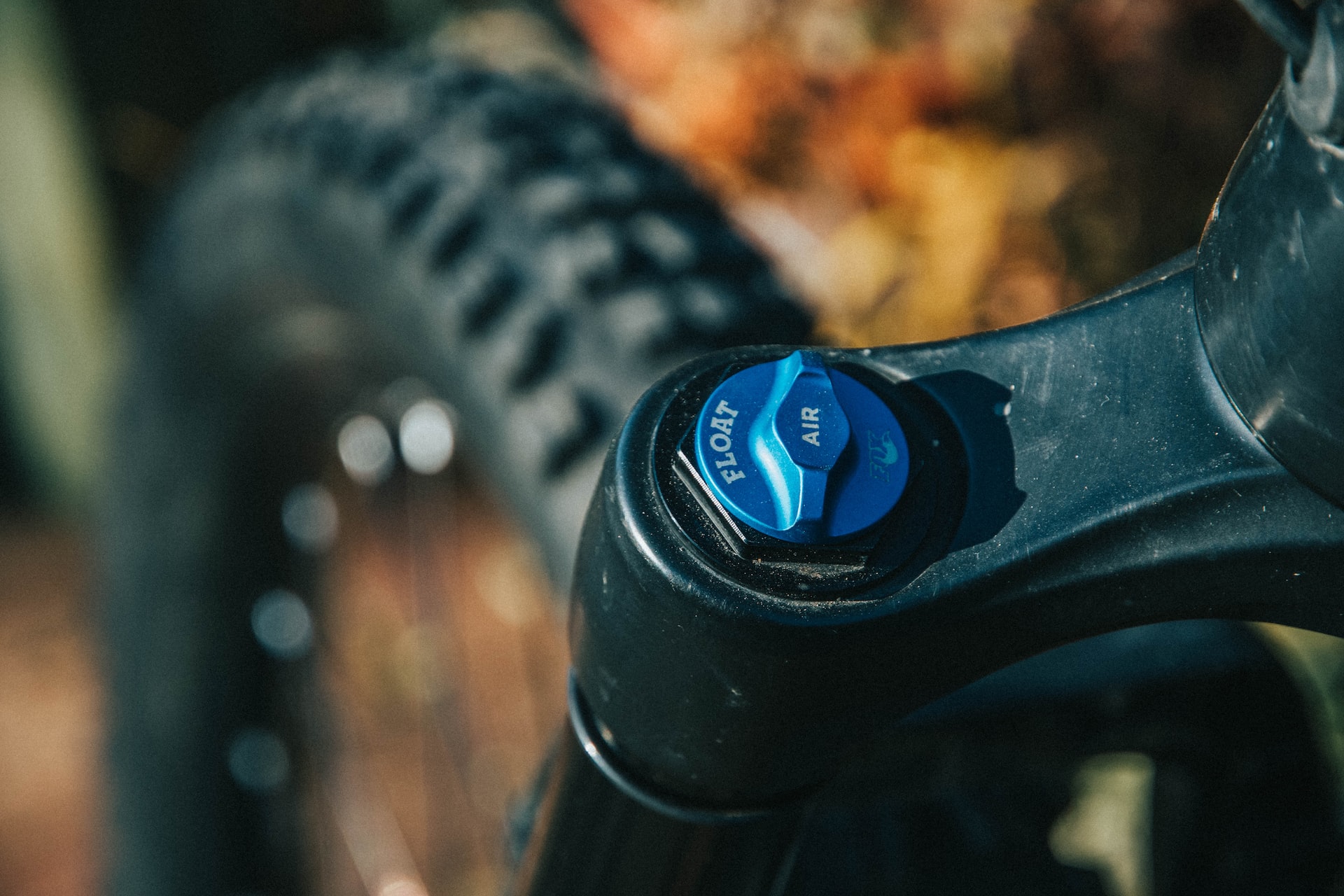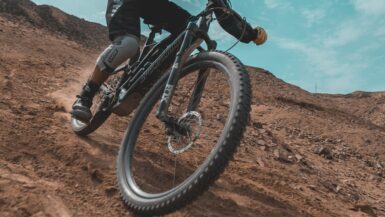Mountain biking is a thrilling and challenging sport that allows riders to explore off-road trails and terrain. When choosing the right bike for the job, one important decision is whether to go with a hardtail or a complete suspension mountain bike. Both bike types have unique benefits and drawbacks; the one that’s right for you will depend on your specific needs and preferences. In this article, we’ll dive into the key differences between a hardtail and full suspension mountain bikes to help you make an informed decision. We’ll cover topics such as suspension, efficiency, weight, and cost so that you can choose the best bike suited to your riding style and goals. Whether you’re a beginner or an experienced rider, understanding the pros and cons of each type of bike can help you make the most of your time on the trails.
The Pros and Cons of Hardtail and Full Suspension Bikes
Mountain biking is one of the most thrilling and fun recreational activities. If you want to get into the sport, you may wonder what bike to purchase. There are two main types of mountain bikes – hardtail and complete suspension bikes. Each type of bike has its unique benefits and drawbacks. This article will explore the pros and cons of hardtail and complete suspension mountain bikes to help you decide which bike is best for you.
The Pros of Hardtail Mountain Bikes
Hardtail mountain bikes are lightweight and offer excellent efficiency when climbing hills and trails. Their rigid frames offer increased feedback when going over bumps and obstacles, allowing for greater control and maneuverability. They also tend to be more affordable than complete suspension bikes, making them an excellent choice for casual riders or those on a budget.
The Cons of Hardtail Mountain Bikes
The major downside to hardtail mountain bikes is the lack of shock absorption. This can lead to an uncomfortable and jarring ride on rocky or root-filled trails. Hardtail bikes also tend to be less agile and forgiving, making navigating tight trails or technical terrain difficult.
The Pros of Full Suspension Mountain Bikes
Complete suspension mountain bikes offer superior shock absorption, making them an excellent choice for tackling challenging trails or riding over rough terrain. They can absorb the impact of bumps, rocks, and roots, making for a much smoother and more comfortable ride. Additionally, they tend to be more agile than hardtails, allowing for greater control and better handling.
The Cons of Full Suspension Mountain Bikes
Complete suspension bikes are heavier and more expensive than their hardtail counterparts, making them a less appealing option for casual riders or those on a budget. Additionally, the suspension components can add complexity and require more maintenance to keep them running in top shape.
Important Considerations when Comparing Bike Types
The hardtail and complete suspension variations are two of the most popular frame types when shopping for a mountain bike. Both options offer unique advantages, so evaluating which bike type is right for you is essential. Here are important things to consider when comparing a hardtail and whole suspension mountain bike.
Weight
The weight is one of the most apparent differences between a hardtail and a complete suspension mountain bike. With additional pivots and hardware, a whole suspension bike will be heavier than a comparable hardtail. This means the hardtail may be better for XC and marathon riders who need to be mindful of bike weight, as those few extra pounds can add up on long rides.
Terrain and Course Type
The terrain you’ll be riding and the course type you prefer should also factor into your decision. A hardtail mountain bike may be a good choice if you primarily ride flat and relatively smooth trails. Hardtails are generally lighter and more agile, which are helpful attributes for riding in terrain that doesn’t require much suspension.
Conversely, a complete suspension bike will provide more comfort and traction if you ride in more technical terrain requiring frequent maneuvering between rocks, roots, and ruts.
Cost
The cost of a bike is always a factor. Generally speaking, complete suspension bikes are more expensive than their hardtail equivalents since they have more moving parts and additional suspension components. So if you’re on a budget and don’t need the additional suspension of a full suspension, then a hardtail may be the best option.
Riding Style
The way you ride will also determine which type of bike is best. A hardtail is the best choice if you like to go fast with minimal effort. However, a complete suspension may be the best choice if you prefer flow-style riding and tend to move quickly over rocks and roots.
Geometry Differences between Hardtails and Full Suspension Bikes
The geometry of a mountain bike is essential in determining how it will ride. Hardtails and complete suspension bikes have different geometry to suit different riding styles. Hardtails have a more traditional geometry setup, with a shorter wheelbase and a more upright riding position. This allows for more control and better handling on tight, technical trails. Complete suspension bikes have longer wheelbases and more relaxed head tube angles, allowing for more confident descending.
Hardtails
Hardtails have shorter wheelbases that provide stability and control on tight, technical trails. The steeper head tube angle results in a more upright riding position and puts more weight over the front wheel for excellent climbing traction. Additionally, the stiffer frame of a hardtail creates a more direct power transfer from the pedals to the rear wheel and a more efficient ride.
Full Suspension Bikes
Complete suspension bikes have longer wheelbases that provide more stability when descending, and the more relaxed head tube angles allow the rider to gain momentum on flowing trails. The rear suspension offers more comfort and control when riding over rough terrain. The longer wheelbase and rear suspension combination make complete suspension bikes great for descending and tackling technical terrain.
Mountain bike geometry is essential in determining how a bike feels and handles on the trail. Hardtail geometry is better suited for tight, technical courses, while entire suspension geometry is better for descending and tackling more challenging terrain.
Pedalling Efficiency on Hardtail and Full Suspension Bikes
When it comes to mountain biking, the debate between hardtail and complete suspension bikes is never-ending. Although choosing between the two comes down to rider preference, specific differences can be considered, one of which is the pedaling efficiency.
Hardtail Bikes
Hardtail mountain bikes have a rigid frame, eliminating any suspension and making them more efficient in pedaling. As they don’t have any rest, the rider’s energy is directly transferred into the pedals, making it easier to climb hills and accelerate quickly on flat terrain.
Full Suspension Bikes
Unlike hardtails, complete suspension bikes have suspension on both the front and the rear wheels, providing more cushioning. This cushioning not only makes the ride more comfortable but also absorbs some of the energy from the rider, making it less efficient for climbing and accelerating on flats compared to a hardtail bike.
Descending and Climbing Differences between Bike Types
Mountain biking encompasses a variety of terrain, and the right bike for the job depends on the riding you’ll be doing. Deciding between a hardtail and a complete suspension mountain bike can be tricky, but understanding the differences in their performance while descending and climbing can help you make an informed choice.
Hardtail Bikes
Hardtail mountain bikes are constructed with a rigid frame and fork and lack rear suspension. This makes them lighter and more efficient for a smooth ride on smoother trails and mellow climbs, as the energy you put into pedaling is delivered directly to the wheels. On the downside, hardtails can be uncomfortable on rough terrain due to the lack of suspension.
Full Suspension Bikes
Complete suspension mountain bikes incorporate front and rear suspension and are designed to absorb the impact of bumps in the trail. This makes them an ideal choice for more technical and challenging terrain, where their superior absorption helps keep the wheels glued to the ground for better speed and control. However, complete suspension bikes do have their drawbacks. They tend to be heavier and less efficient when pedaling compared to hardtails.
Components for Hardtail and Full Suspension Bikes
Whether you choose a hardtail or a whole suspension mountain bike, specific components are standard. The frame is the main component that makes up a mountain bike and is available in hardtail and exclusive suspension varieties. Both bikes have forks, handlebars, wheels, tires, and pedals. When choosing a bike, it is crucial to consider the most critical components for you.
Frames of Hardtail and Full Suspension Mountain Bikes
The frame is the main component of any mountain bike and is available in hardtail and whole suspension varieties. A hardtail frame has no rear suspension and is typically made of aluminum or steel. The structure of a full-suspension bike has two shocks integrated into the frame, one in the rear and one in the front. A complete suspension bike’s rear suspension helps absorb bumps and soften the ride.
Forks of Hardtail and Full Suspension Mountain Bikes
The fork of a mountain bike is located at the front and helps to absorb the impact of bumps and rough terrain. Both hardtail and complete suspension bikes have forks. A hardtail fork is usually made of aluminum or steel and has no suspension. A full-suspension bike has either a suspension fork or an air fork that has suspension built into it.
Handlebars, Wheels, and Tires of Hardtail and Full Suspension Mountain Bikes
The handlebars, wheels, and tires of both hardtail and full-suspension mountain bikes are similar. The handlebars are typically made of aluminum or steel. They are also ergonomically designed to give the rider maximum control and comfort. The wheels are essential components that determine how the bike performs and the type of terrain it can handle. The wheels are typically 26 to 29 inches in diameter, and the tires are knobby and wide to provide maximum traction and stability.
Pedals of Hardtail and Full Suspension Mountain Bikes
Both hardtail and complete suspension mountain bikes have pedals. The pedals are typically either platform or clipless, allowing the rider to shift their feet for better control and more power.
Paying attention to the components and ensuring they are the best possible for your needs is essential. Both types of bikes have similar elements, but the full suspension bike has additional features that make it better suited for rougher terrain.
Cost Comparison between Bike Types
Mountain biking is a great way to explore nature, but the type of bike you choose can significantly impact the cost. Hardtail and full-suspension mountain bikes are popular styles with a big price difference.
Hardtail Mountain Bikes
These bikes are less expensive than full-suspension bikes. This is because they have only one suspension system in the front, which is usually more affordable than a more complicated system in the rear. Hardtails are generally easier to maintain and repair since there are fewer components. These bikes can be purchased for less than $500, making them an ideal choice for budget-conscious riders.
Full Suspension Mountain Bikes
Full-suspension mountain bikes have suspension systems in both the front and rear, making them more expensive than hardtail bikes. They can also be more complicated to maintain and repair, as there are more components. A full-suspension cycle can range from $800 to $3000; some high-end models can even cost more.
Summary of the Hardtail and Full Suspension Difference
Performance Differences
Hardtail mountain bikes provide a more rigid frame and require less maintenance than full-suspension bikes. They are also lighter and more affordable, making them a popular choice for cost-effective rides. This type of bike is best suited for those who plan to ride on flat or undemanding terrain.
Full-suspension bikes, on the other hand, offer greater comfort and control. The suspension system absorbs shock, which reduces fatigue and allows the rider to go faster over uneven terrain. This bike is ideal for more technical trails and especially beneficial for downhill racers.
Maintenance Requirements
Hardtail bikes require less maintenance than full-suspension bikes due to the lack of moving parts. Because of this, they tend to be more reliable and have a longer lifespan.
Full-suspension bikes, on the other hand, require more maintenance. The suspension components must be regularly serviced and replaced, as they will wear out over time. In addition, the bearings and pivot points must be inspected and cleaned regularly.
Price Difference
Hardtail bikes are generally less expensive than full-suspension bikes. This makes them a more affordable option for those on a tight budget. However, the cost of maintenance and repairs can add up over time, so it is essential to factor this into your purchase decision.
Full-suspension bikes are more expensive but can be worth the investment for those who plan to ride more technical trails. The cost of maintenance and repairs is offset by the improved stability, comfort, and control that come with the suspension system.
Conclusion
Consider your riding style, terrain, and budget when choosing between a hardtail and a complete suspension mountain bike. Hardtails are great for casual riding on groomed trails and offer increased feedback and control. At the same time, full-suspension bikes provide superior shock absorption and are better suited for tackling technical terrain or rough tracks. Regarding pedaling efficiency, hardtails offer more efficiency, but full-suspension bikes provide more cushioning and comfort. Both types of bikes require different maintenance levels and have other price points. Ultimately, your best choice will depend on your individual needs and preferences.






Leave a reply